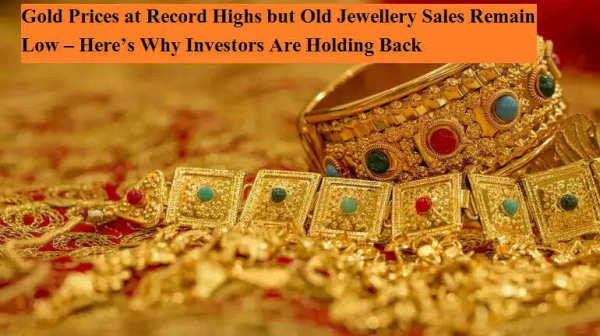
Gold prices have once again scaled record heights, yet a surprising trend is emerging in the Indian market: people are reluctant to sell their old jewellery despite the opportunity to book significant profits. Normally, when gold rates surge, households rush to exchange or sell old ornaments to cash in on the rally. This year, however, the story is different.
Gold Surpasses Historic Levels but Sellers Stay Away
In March 2025, international gold prices breached the $3,000 per ounce mark for the first time, sparking a surge in second-hand jewellery supply as many rushed to liquidate their holdings. But in recent weeks, despite prices touching a fresh all-time high of $3,702 per ounce on September 17, the flow of old gold into the market has slowed dramatically. In India, domestic prices even touched ₹1,10,666 per 10 grams earlier this week before easing slightly. Spot gold dipped by 0.6% to $3,665.98 per ounce on September 18 after the record peak.
Expectation of Further Gains Keeps Investors Patient
Industry experts believe that expectations of continued price growth are behind this unusual restraint. Speaking at the India Gold Conference in Delhi, James Jose, Managing Director of CGR Metalloys, explained that many consumers are convinced gold has not peaked yet. “People think prices will rise further, so instead of selling for a quick profit, they prefer to hold their jewellery as an investment,” he said.
This sentiment is backed by performance data. Gold has already delivered 42% returns to investors in 2025, doubling last year’s strong 21% gain. Such consistent gains are encouraging households to treat gold as a long-term wealth protector rather than a short-term trading asset.
Old Gold Scarcity Benefits Banks and Refiners
The slowdown in old gold supply is reshaping the jewellery trade. According to Amit Modak, CEO of Pune-based PNG Gadgil & Sons, rising prices are making new jewellery purchases expensive. Many customers are opting to exchange old ornaments for new designs rather than selling for cash. Harshad Ajmera of Kolkata’s JJ Gold House added that refiners are relying heavily on recycled gold to maintain supply because imports of dore (unrefined gold) have fallen sharply.
This scarcity is proving advantageous for banks. Normally, jewellers meet festive demand through gold imports, often sourced via banks. With limited second-hand supply and a sharp rise in festival demand, banks are charging a premium of $1 per ounce over international prices to release their stocks.
Imports Surge Ahead of Festive Season
Despite high prices, India’s appetite for gold remains strong as key festivals such as Dhanteras and Diwali approach—occasions traditionally considered auspicious for buying gold. Government data shows that gold imports jumped 37% in August, reaching $5.4 billion compared to the previous month, underscoring strong underlying demand.
Outlook: Holding Is the New Selling
In past price rallies, quick profit-taking flooded the market with old jewellery. This time, however, the combination of strong returns, festive demand, and expectations of further gains is keeping sellers on the sidelines. Unless prices show signs of a sustained correction, industry insiders expect the trend of holding rather than selling to continue—tightening supply and supporting prices through the upcoming festive season.
With gold’s exceptional performance and investor confidence at a high, the precious metal remains firmly in the spotlight, not just as a commodity but as a key pillar of household wealth in India.
-
Bigg Boss 19: Amaal Mallik opens up about his traumatic past, reveals why he is aggressive; ‘I was 7 years old when…’

-
Aishwarya Rai lost Miss India 1994 for this reason; why Sushmita Sen believed it was fixed, reveals Prahlad Kakkar

-
Nightmare for Rachel Reeves as Chancellor 'issued bombshell tax rise warning'

-
Horror final moments of girl, 2, suffocated to death by family's pet python in her cot

-
Sharadiya Navratri 2025: The Arrival of Goddess Durga on an Elephant
